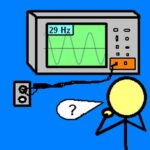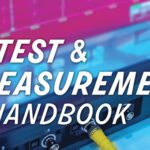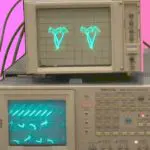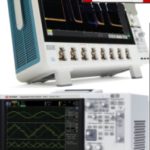William Herschel was a gifted musician and composer who by chance obtained a 10-foot long, 30-inch reflecting telescope from the estate of his deceased friend, a violinist. Due to damage in moving it, he had to rebuild the instrument. This drew him into telescope making and then astronomy.
 He also discovered infrared radiation by placing a thermometer just outside of the visible spectrum. More specifically, in 1800 he noticed that different colored filters he was using to observe sunlight seemed to pass different amounts of heat. To see what was going on, he directed sunlight through a glass prism to divide sunlight into its constituent colors, then measured the temperature of each color. This happened via three thermometers with blackened bulbs (to better absorb the heat). Herschel set up one thermometer to receive light from one color while the other two thermometers sat beyond the spectrum as control samples, then moved the thermometer to check other colors.
He also discovered infrared radiation by placing a thermometer just outside of the visible spectrum. More specifically, in 1800 he noticed that different colored filters he was using to observe sunlight seemed to pass different amounts of heat. To see what was going on, he directed sunlight through a glass prism to divide sunlight into its constituent colors, then measured the temperature of each color. This happened via three thermometers with blackened bulbs (to better absorb the heat). Herschel set up one thermometer to receive light from one color while the other two thermometers sat beyond the spectrum as control samples, then moved the thermometer to check other colors.
Herschel discovered all the colors had temperatures higher than the controls and that the temperatures of the colors rose from the violet to the red part of the spectrum. Consequently, Herschel decided to measure the temperature just beyond the red portion of the spectrum in a region that apparently contained no sunlight.
He found this region had an even higher temperature. He dubbed the light rays beyond the red portion of the spectrum calorific rays (derived from the Latin word for heat) and found they behaved pretty much like visible light. Of course, this area of the spectrum beyond red light is now known as infrared radiation–The prefix infra means below.
The technology used to measure IR has progressed far beyond thermometers with blackened bulbs. Infrared radiation is the region of the electromagnetic radiation spectrum covering wavelengths of about 700 nm to shorter than 1 mm. Near IR (wavelengths from 800 to 2,500 nm) detectors are usually photoconductive cells. CMOS CCDs can handle the shorter end of the NIR range but aren’t sensitive enough for the rest of the NIR range (over 1,000 nm). InGaAs and PbS devices have higher quantum efficiency for wavelengths in that range. Some instruments combine silicon-based and InGaAs detectors to handle both UV-visible and NIR spectra.

Far infrared (15 μm to just shorter than 1 mm) detectors are based on thermal energy change. Far infrared photons are absorbed and converted to thermal energy which heats up the sensor. Thermocouples, resistance thermometers (like bolometers) or gas thermometers (like pneumatic or Golay cells) are all candidate FIR sensor technology.
A bolometer consists of an absorptive element, such as a thin layer of metal, connected thermally to a thermal reservoir. Any radiation on the absorptive element raises its temperature above that of the reservoir proportional to the amount of the absorbed power. The temperature change can be measured directly with an attached resistive thermometer, or the resistance of the absorptive element itself can be used as a thermometer. A lot of modern bolometers use a semiconductor as the absorptive element. Commercial bolometers may require cryogenic cooling to cancel out environmental thermal effects, but other approaches that eliminate the need for cooling are under development. One such idea uses MEMS technology: A silicon membrane gets coated with IR-absorbing Ge and then a single air-gap coupled absorption filter is devised from a micromachined weakly absorbing top mirror. These devices couple incident radiation into their top plate, which simultaneously serves as mirror, absorber, and thermistor.

Golay cells use the expanding volume of a gas when heated as their detection mechanism. The cell typically has an air chamber connected to a flexible sheet through a small pipe. The side of the sheet away from the pipe is a mirror. There is an absorption film attached to the front of the air chamber. When IR hits the absorption film through the window, and the film transfers the absorbed heat energy to the gas. This boosts the temperature of the gas and the air pressure, thereby moving the flexible mirror. On the other side of the chamber, a beam of visible light is focused on the flexible mirror through a grid-like diaphragm. The grid-like image reflected by the flexible mirror projects onto a photocell through the diaphragm. When the flexible mirror moves because of the pressure changes, there will be a relative displacement between the grid-like image and the grid-like beam. The amount of light falling on the photocell changes, so the output signal of the photocell also changes. This variation reflects the intensity of the incident IR radiation.
The Golay Cell is has a high sensitivity and is stable. But it also responds slowly and is complex, so it’s generally used exclusively in laboratories.

As a brief review, thermocouples operate by measuring the temperature differential from their junction point to the point in which the thermocouple output voltage is measured. Where there is a difference in temperature between junctions and points of transition from one metal to another, a current is produced as if generated by a difference of potential between the hot and cold junction.
Thermocpiles use thermocouples connected in series with a junction located on either side of a thermal resistance layer. The output from the thermocouple pair will be a voltage directly proportional both to the temperature difference across the thermal resistance layer and to the heat flux through the thermal resistance layer. Adding more thermocouple pairs in series boosts the magnitude of the voltage output. Thermopiles can be constructed with a single thermocouple pair, composed of two thermocouple junctions, or multiple thermocouple pairs.
Thermopiles do not respond to absolute temperature; They generate a voltage proportional to a local temperature difference. Thermopiles are widely used in thermometers such as those for measuring body temperature. Spot thermometers also contain thermopiles.






Leave a Reply
You must be logged in to post a comment.